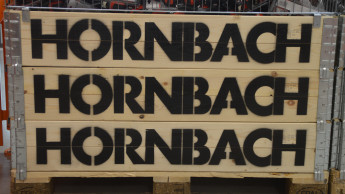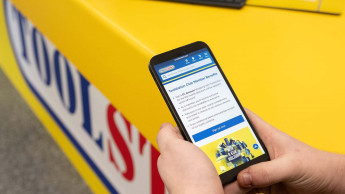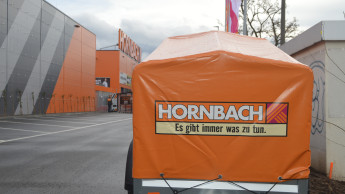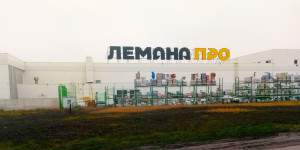All the German DIY retailers combined opened 104 new outlets in 2005 (2004: 101), added to which were 40 reopenings after renovation or extension work (2004: 50). These figures are offset by 70 closures or takeovers (2004: 80). The combined retail area of the Top 20 German DIY retailers remained almost the same in 2005 at 15.6 mio m². These same 20 companies operated an overall total of 3 526 DIY superstores at home and abroad in 2005 (2004: 3 309). There were 4 219 DIY stores in Germany altogether in 2005 (2004: 4 183).
Celo and Kaes are two participants in the market which ranked 20th and 30th in 2004, but which moved up into the Top 20 as a result of the merging of Hagebau and Zeus as of 01.01.2005 and the acquisition by EMV-Profi of Nowebau's retail activities. Hagebau/Zeus, previously in fifth position by sales volume, succeeded in consolidating this position and considerably narrowing the gap to Hornbach, and EMV Profi managed to move up one position to 13th currently. Obi still heads the overall sales league table at € 5.2 bn (unchanged from previous year), followed, again unchanged, by Praktiker (+€ 150 mio), Bauhaus (+€ 180 mio) and Hornbach (+€ 200 mio). However, clearly the new winner in terms of number of stores is Hagebau (711) as a result of the 2005 merger, followed by Obi unchanged at 490 (sale of stores in China, etc). Hornbach headed the field in terms of sales/m² in 2005 at € 2 017, followed by Knauber at € 1 969.
Domestic sales of the 20 major DIY retailers rose minimally in 2005 by € 20 mio or 0.1 per cent to € 19.35 bn (2004: € 19.33 bn). The total number of outlets expanded, partly as the result of mergers and extensions, by 154 to 2 936 stores. Last year saw the opening of 64 new DIY stores altogether in Germany, or twelve fewer than the previous year.
The total of 15 German DIY retailers operating abroad recorded sales of € 5.052 bn in 2005 (2004: approx. € 4.7 bn), which reveals that the 20 largest German DIY retailers now generate more than 21 per cent of their sales abroad. The rise in foreign sales amounted to 6.5 per cent in 2005, while sales in Germany were almost at a standstill. The number of outlets abroad increased by 63 to 590 between 2004 and 2005 (partly as the result of mergers, extensions and revaluations). Altogether 40 new DIY stores were opened abroad in 2005, compared with just 25 in 2004. This means that the number of foreign openings reached a new record level in 2005.
Last year saw noticeable shifts when it came to the size of retail area within the new openings (v. below). The increase in stores with a retail area in excess of 10 000 m² was especially great (+4.8 percentage points), while there was a drastic reduction of 10.5 percentage points in the number of stores between 1 000 m² and 2 500 m² in size. All in all, the average store size of the Top 20 German DIY retailers has increased by more than one-third, from 3 306 m² to 4 461 m², between 1995 and 2005 as the result of renovations and new openings.
There were also great changes in 2005 over the previous year when it came to the type of company responsible for the new openings. Multiples like Praktiker, Bauhaus and Hornbach increased their share of new openings by 14.1 per cent to 61.5 per cent (= 64 new stores), whereas the franchisers' share fell by 9.6 percentage points to 33.7 per cent (= 35); the cooperative groups opened only five new DIY outlets in 2005 instead of as many as ten in 2004.

 Menü
Menü
















